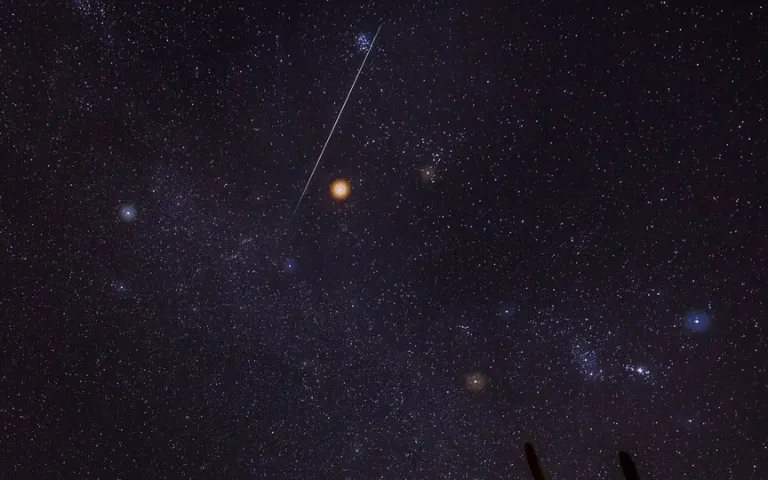Unlocking the Mystery of the Geminid Meteor Shower
New discoveries have provided insight into the enigmatic beginnings of the yearly Geminid meteor shower. Desiree Apodaca from the Goddard Space Flight Center shared fascinating observations in a NASA blog post on June 14, 2023, indicating that the Geminid meteor stream may have been formed by either a high-velocity impact or a gaseous detonation.
Unlike other meteor showers, such as the Delta Aquarids or the Perseids, which are caused by debris from icy comets orbiting the Sun, the Geminid meteorites have a different source. Scientists have known for several decades that the parent body of the Geminids is not a fragile comet, but a solid asteroid called 3200 Phaethon, as reported by EarthSky. Phaethon’s behavior is peculiar.
While most asteroids do not exhibit such characteristics, Phaethon, as it passes the Sun, displays temperature-driven activity, increasing its ability to generate a meteor shower.
New evidence has come from the Parker Solar Probe mission, which focused on studying the sun at close range. During its orbit, the spacecraft encounters clouds of dust grains from the asteroid Phaethon, resulting in high-speed collisions that create unique electrical signals known as plasma clouds. NASA explains that these shock clouds produce distinctive electrical signals that are detected by several sensors on the probe’s FIELDS instrument, which measures the electric and magnetic fields near the Sun.
Using data from the Parker Solar Probe, the researchers performed simulations of various Geminid meteor shower formation scenarios. Their observations showed that the most suitable explanation for the phenomenon was a violent event, such as a collision with the asteroid Phaethon or a sudden gas explosion. By analyzing the data, the researchers decided that the violent scenario best fit their findings.
In conclusion, data from the Parker Solar Probe has played a crucial role in unraveling the mystery behind the Geminid meteor shower. It suggests that a violent event at the asteroid Phaethon is the most likely cause of this spectacular celestial event.




